Aided System for Visually Impaired using Intel Galileo Gen-2
Aided System for Visually Impaired People in Bus Transport using Intel Galileo Gen-2: Technical Note
K. Bommarajua, A. Manikandanb and S. Ramalingamc
Dept. of Electronics and Communication Engg., Government College of Engg., Trichy, India
Â
ABSTRACT:
Visually impaired people have difficulty in travelling and accessing information about public transportation systems. Several systems have been developed for helping visually impaired people to use the city bus. Most systems provide dual-way communication and require costly and complex equipments. The purpose of this study is to reduce the difficulties faced by visually impaired people while boarding in city buses, using an interactive wireless communication system. The system comprised a user module and a bus module to provide a direct one-to-one connection to reduce the difficulties due to many-to-many communication. When the user triggers the switch, the user module immediately sends out the information. If the bus module receives the matched signal, it buzzes and the warning LED flashes to notify the bus driver that someone is waiting to board on the bus. The interactive wireless communication aid system is a valid and low-cost device for assisting visually impaired people to use city buses.
KEYwords:
Wireless communication; Visual impairment; Public transportation
Citation:
K. Bommaraju, A. Manikandan and S. Ramalingam. 2017. Aided System for Visually Impaired People in Bus Transport using Intel Galileo Gen-2: Technical Note, Int. J. Vehicle Structures & Systems, 9(1), 219-223.
Â
- Introduction
The use of public transport is vital to the productivity and independence of visually impaired people. Supporting visually impaired people to use the public transport can increase their chances of education and employment and reduces the financial burden on their families. In most physical environments, the visually impaired people have difficulty in accessing information about bus stops, terminals, vehicles, schedules, maps, and directories, which prevent them from using the public transport effectively. Knowing the location of the bus stop and the time when the bus arrives are the difficulties faced by the visually impaired people. Some position navigation systems have been developed to solve the problem of locating bus stops. Advanced public transportation services (APTS), including bus dynamic information display method with the Global Positioning System (GPS) technology, have been developed by many countries.
APTS [1] helps with the bus-stop voice reporting systems to provide more information for visually impaired people about the arrival of the bus which they want to board. Some APTS combined special handling devices were designed to provide dynamic information for visually impaired people. In Taiwan, the Taipei city government utilized an experimental system named “broadcasting bus”, that announces the bus number upon arriving at the bus terminal, to serve the visually impaired in 2002. The APTS named “e-bus system” started to be deployed in Taipei city since 2005 [3]. Using these technologies the number and the waiting time of the buses were shown on the light-emitting diode (LED) screen at the smart bus stops using GPRS facility. Only 20 percent of bus stops are planned to build. A survey of 400 passengers in 1998 revealed that the smart bus stops are not sufficient when equipped only with the voice reporting system because the voice information confused when many buses approached the same terminal at the same time which was a disadvantage of using many-to-many communication. The APTS with bus-stop voice reporting system and handheld devices might not provide a solution to this important issue.
A survey showed that it would be very helpful if somebody could alert bus drivers about their boarding on buses. Various systems have been developed for visually impaired to communicate with bus drivers. Mehra et al. developed a user-triggered bus identification system in 2010. The user could select a particular bus and send signals by user module, and then a small LED starts flickering in the driver’s control panel. The system offered only one-way communication. Bischof et al.developed a wireless local area network (WLAN) communication system named NAVCOM. The authors proposed that blind people need a feedback to make sure whether the bus drivers get the original message. Another bus identification system designed by El Alamy et al. involves a bus station controller to identify users and send signals to buses with radio frequency. This system will say the information of the bus number when there is a 2-meter distance between the bus and the bus station.
In Taipei, bus drivers are forced to leave the bus stop as soon as possible because most time several buses arrive at the same bus stop simultaneously. Visually impaired people are often ignored at bus stops if no one informs bus drivers about waiting passengers [2]. The aim of the present study is to reduce the difficulties faced by visually impaired people while taking buses with interactive wireless communication design. The interactive feedback system allow visually impaired people and bus drivers to receive the transmitted signals from each other and improve the success rate of boarding correct buses [4].
- Project moto
The moto of our project is to help the visually impaired people to transport easily and also we added some extra features through which the deaf could also be benefited in bus transport. So our project is like a knife which is sharp at both the ends and is going to help the people in two ways. Adults also can know which bus is going to arrive at that moment. So all the people in the society can use this system. We are very interested in doing such a project for our society. There are two modules user module and bus module. The user module will be handled by the user or it can also be placed as common in the bus stop also, so that all the people can use it and then if it is handled by single user alone then he or she can only use it. The bus module is fixed in the place where the driver can notice it.
- Hardware design
For the development of our project, we use two modules.
- One at the bus driver-bus module
- One at the passenger-user module
Here we are using both transmitter and receiver at both the module. The process, here is that the passenger waiting at the bus stop should switch on the passenger module, it sends out the signal, that signal is received at the receiver of the bus module. Then automatically the alarm sound will be produced and then the LCD will display that there is a passenger is waiting at the nearby bus stop, and then an LED will be glowing there. There are many components that are used for this process. Two types of IC’s are used one is coding IC and the other is decoding IC.

Fig. 1: Intel Galileo Gen-2
Here the signal is transmitted and received using RF transmitting and receiving modules. For various indicating purpose we use different types of LCD such as warning LED to glow while the buzzer buzzes and the power LED to indicate the status of the module whether it is in ON or OFF state. The main component of our project is Intel Galileo Gen-2 board which is used in Adruinio programming platform as shown in Fig. 1. The speciality of this board is that it can be used as a PC after installing an OS through SD card. It also has some special features that it can be connected to LAN and access internet, it has 20 digital pins which can be used as input/output and 6PWM output pins. We can also connect USB cable to it to transfer programming to it. It works with a power supply of 7-15V DC input. The coding IC HT12E is a 18 pin IC as shown in Fig. 2 mostly used for Radio Applications. The main purpose of this IC is to convert parallel input to serial output. It has 8 address pins and 4 data pins, used as an encoder. It has an active low enable pin and works on the voltage level of 2.4-12V.

Fig. 2: Encoding IC
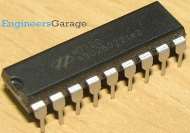
Fig. 3: Decoding IC
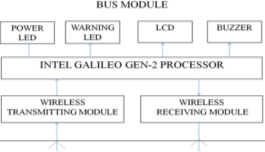

Fig. 4: System framework of the user module and the bus module
In Fig. 3, the decoding IC HT12D is also a 18 pin IC and converts the serial input to parallel output. Which does the opposite process on the coding IC. Operates at the voltage level same as coding IC. The block diagram shows the components connection of both user and bus module.
- System development
In a real environment, the interaction between visually impaired people and bus drivers are many-to-many relationship rather than a one-to-one. For technological simplicity, in our system we used a one-to-one interactive communication system. The collision of communication data over the one-to-one interactive wireless communication leads to the poor stability and low accuracy of wireless communication. The signal communicates through two distinct frequency bands: 434MHz and 315MHz. The interactive wireless communication system has two modules: a user module for the visually impaired (Fig. 4), and a bus module (Fig. 5) for bus drivers. The hardware was developed according to the interactive design. The user module consists of a wireless transmission module (434MHz), a wireless receiving module (315MHz). The bus module consists of a wireless transmission module (315MHz), a wireless receiving module (434MHz). When the user module sends out a signal, it is transmitted through the 434MHz band to the bus module, which then sends reply through the 315MHz band to the user module. In this way by using different frequencies for transmitting and receiving signals, the problem of wireless data collision between users is avoided.
- Outcome measure
A basic requirement of this system is the wireless communication distance. If the wireless communication distances were shorter than buses stopping distances, conversely, if the wireless communication distance was too long, it was possible that the bus driver would have received the information from a waiting user too early. To avoid such situations, the maximum transmission distance of this system must be less than 100 meters. The outputs are displayed in an LCD which are taken snapshot for both transmitter in Fig. 5 and receiver in Fig. 6.
5.1. Transmitter:
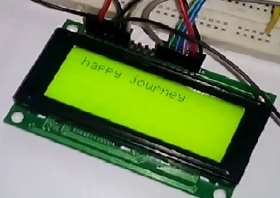
.5(a) : Transmitter – Initial Stage

.5(b) : Transmitter – After Request
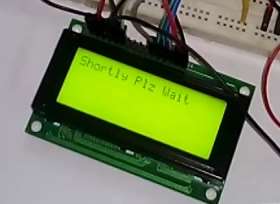
.5 (c): Transmitter – After press Key pad
5.2. Receiver
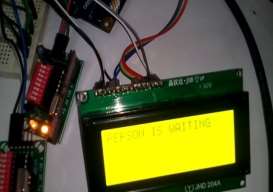
6(a): Receiver – Request of the blind person in the bus module
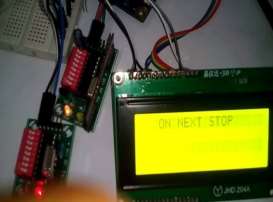
6(b): Receiver- Indication of the blind person
- Conclusions
Thus this system improves the confidence of the visually impaired to take city buses and travel to their desired destination. This system is flexible to any climatic conditions. Thus by using our project visually impaired people can use the public transport facilities in an efficient manner.
ReferenceS:
- A. Montarzino, B. Robertson, P. Aspinall, A. Ambrecht, C. Findlay, J. Hine and B. Dhillon. 2007. The impact of mobility and public transport on the independence of visually impaired people, Vis. Impair. Res., 9, 67-82. .
- E. Neuville, M. Izaute and L. Trassoudaine. 2009. A way finding pilot study: The use of the intelligent public vehicle by people with visual impairment, Br. J. Vis. Impair., 27, 65-74. .
- Survey on Difficulties in Daily Living of above 6 Year-Old Physically and Mentally Disabled, Report on Physically and Mentally Disabled Citizens Living Demand Survey, 2000, Taiwan Ministry of the Interior, Taipei, Taiwan, 329.
- W.R. Wiener, P. Ponchillia, E. Joffee, J.R. Kuskin and J. Brown. 2000. The effectiveness of external bus speaker systems for persons who are visually impaired, J. Vis. Impair. Blind., 94, 421-433.
- T.P. Hatlen and L.A. Myers, Advocating in behalf of blind and visually impaired bus travellers, Access to Mass Transit for Blind and Visually Impaired Travelers American Foundation for the Blind, 87-91.
- Hsiao-Lan Wang , Ya-Ping Chen , Chi-Lun Rau and Chung-Huang Yu. An Interactive Wireless Communication System for Visually Impaired People Using City Bus Transport. Int. J. Environ. Res. Public Health 2014, 11(5), 4560-4571; doi:10.3390/ijerph110504560.
Â
Order Now